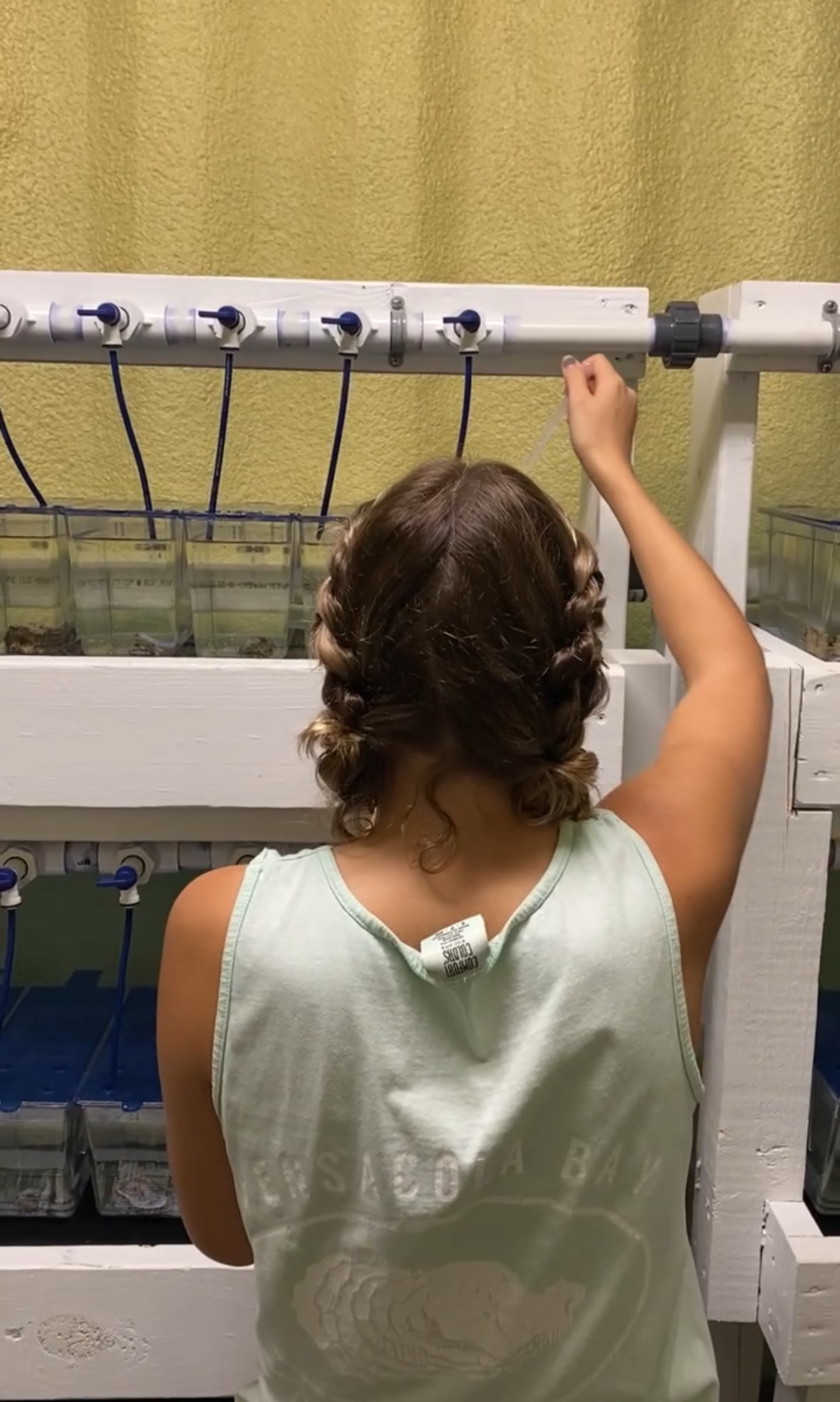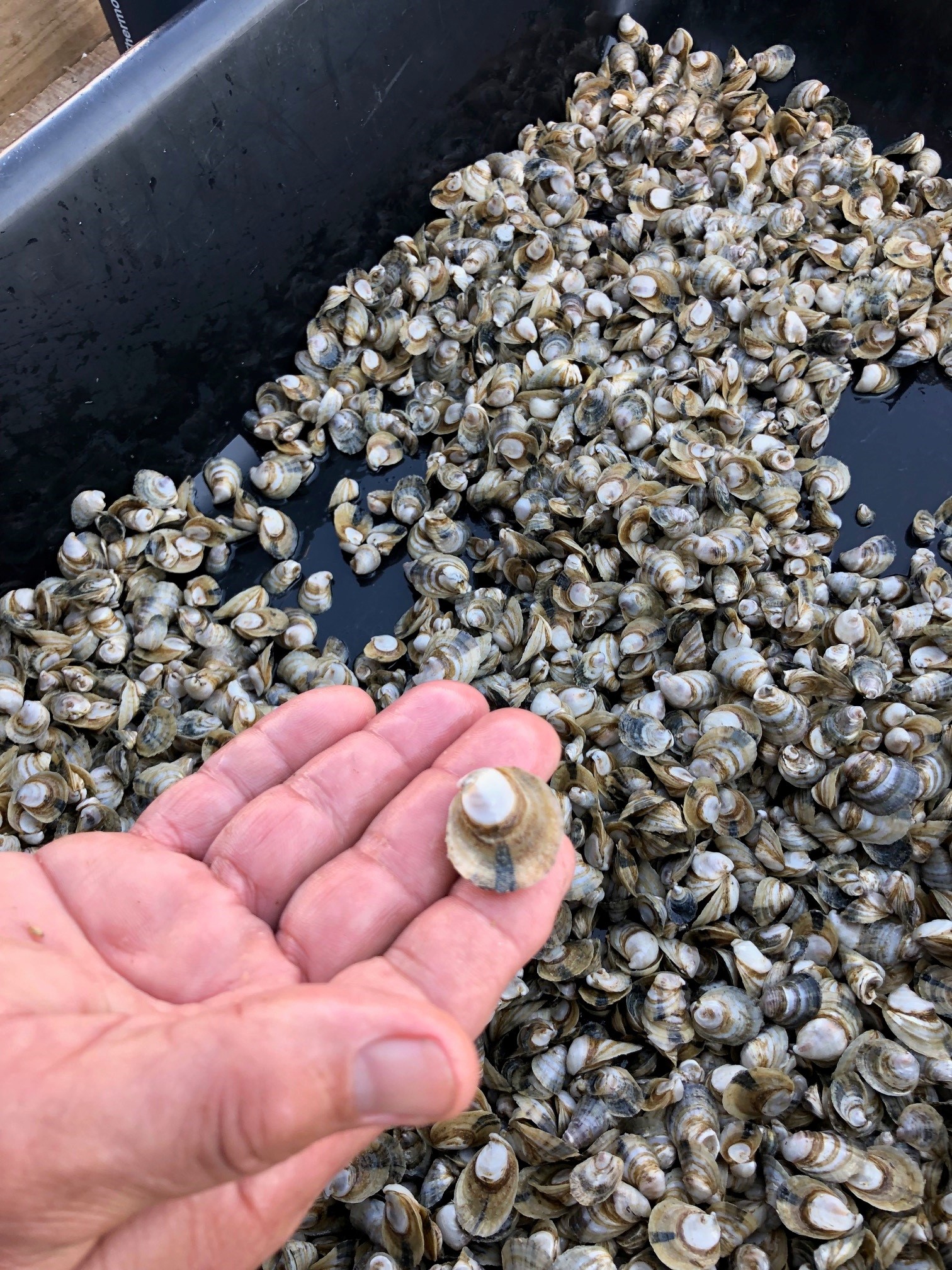When you sit down and enjoy some fresh, farmed oysters during the summer, you might notice that the oyster is not watery but yet plump and full of meat, unlike the usual wild oysters. These farmed oysters are very special and are called “triploid oysters.” What makes an oyster a triploid? Well, it all starts in the oyster hatchery and involves using tetraploid male oysters to breed with diploid female “wild” oysters.
Before we dive into triploids, let’s go over some definitions. A diploid organism contains two sets of chromosomes. As humans, we have two sets of chromosomes, and the pair is formed by a chromosome from the mother and a chromosome from the father. Triploid organisms contain three sets of chromosomes and while very rare, triploidy does happen in the wild. Tetraploid organisms have four sets of chromosomes and are usually only formed in a laboratory setting using pressure or other means to cause tetraploidy. When you breed a tetraploid oyster with a diploid oyster, the result is a triploid oyster.

Inside of an oyster hatchery, you will see many small breeding chambers for the oysters. When a hatchery decides to spawn oysters, they place a single wild diploid oyster in each chamber. During spawning, the hatchery will introduce a cycle of cold then warm water and this cycle is repeated until a spawn is triggered. Hatchery workers will closely watch the oysters and will shut off the water supply to any oyster that has spawned so they can trap the gametes in the chamber. You can determine the sex of an oyster by watching it spawn; a female oyster “claps” out her eggs while a male opens slightly and releases sperm into the water. When spawning for triploid oysters, the hatchery workers will only obtain the eggs from female diploid oysters and discard any diploid sperm to avoid cross contamination. During the spawn, a worker will strip the sperm from male tetraploid oysters and once all female diploids are done spawning, they will introduce the tetraploid sperm to the diploid eggs. After 30 minutes, fertilization rates are calculated and stocking densities are formed.

Why Would a Farmer Want to Grow a Triploid Oyster?
There are many benefits for a farmer to raise triploid oysters. First and foremost, triploid oysters are sterile. This is a major benefit for the farmers during the summer months. During the summer, wild diploid oysters spawn, and when they spawn, the meat turns very thin and watery. In the Panhandle of Florida, the harvest of wild oysters is prohibited in the summer and only farmed oysters can be harvested.
Another added benefit is the increased growth rate of a triploid oyster compared to a diploid oyster. As mentioned above, triploid oysters lack the ability to spawn. Since a triploid oyster does not have to spend energy producing gametes, it puts all of its energy into growing its shell and meat. A typical diploid oyster could take more than two years to reach harvest size, where a triploid oyster can reach harvest size within 8 months (commonly 12-24 months but there are usually some fast growers in a batch).
There are more benefits of triploid oysters including selective breeding for disease resistance and environmental sustainability. With the use of triploid oysters for oyster farming, wild stocks go relatively unaffected and help contribute to more sustainable aquaculture practices. I hope this brief explanation of triploid oysters will help you understand more about the somewhat unknown world of oyster aquaculture. With demand for oysters on the rise, triploid oysters hold great promise in meeting the needs of an ever-growing oyster aquaculture industry.
- Bring Some Wild Game To Your Holiday Dinner - December 15, 2025
- Aquaculture in the Southern United States: Part 5 – North and South Carolina - December 8, 2025
- Aquaculture in the Southern United States: Part 4-Louisiana & Mississippi - October 29, 2025
